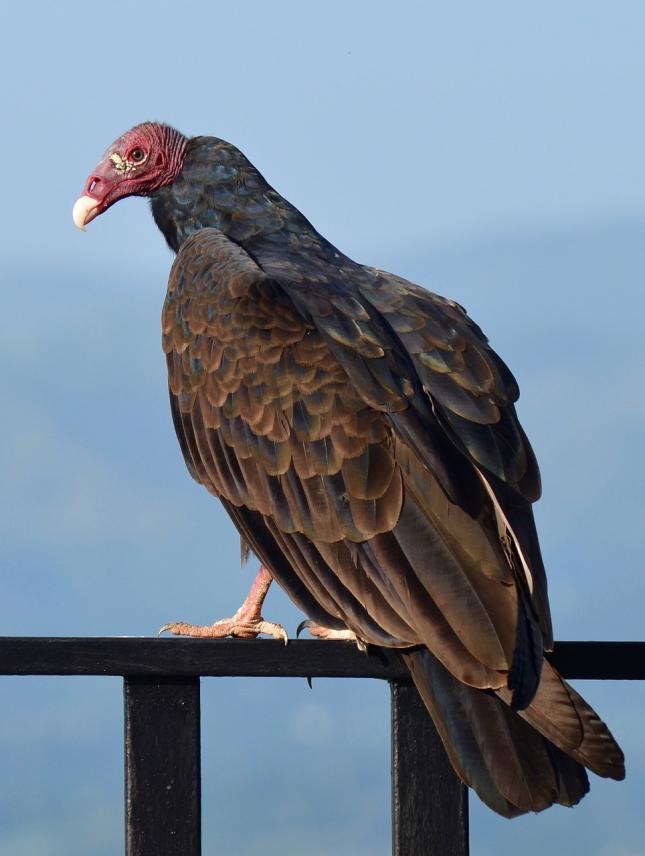
image courtesy of pixabay
BIRD OF THE MONTH: TURKEY VULTURE
Turkey Vultures are large dark birds with long, broad wings. They are bigger than all other raptors except for eagles and condors. They have long "fingers" at their wingtips and long tails that extend past their toes in flight. When soaring, they hold their wings slightly raised making a "V" and move in wobbly circles.
Turkey Vultures appear black from a distance but up close are dark brown with a featherless red head and pale bill.
These birds are majestic but unsteady soarers characteristically flying with very few wingbeats. They may glide low to the ground looking for food or ride high on thermals for a better vantage point. They may soar alone or in small groups and they roost in large numbers. They may be seen on the ground huddled around roadkill or dumpsters.
Turkey Vultures are usually seen in open areas including mixed farmland, forest and rangeland. They may be found along roadsides and at landfills. At night, they roost in trees, on rocks and other high secluded spots.
Turkey Vultures eat carrion which they find by using their excellent sense of smell. The part of their brain that is responsible for detecting smells is particularly large compared to other birds. They can even find dead animals below a forest canopy.
Mostly they eat mammals but have been known to munch on reptiles, other birds, amphibians, and fish. They are skilled foragers and are even known to leave aside the scent glands of dead skunks. They appear to have a highly developed immune system as they are able to feast on carcasses without contracting diseases like botulism, anthrax, cholera or salmonella. They never attack living prey.
Turkey Vultures don't build full nests. They may scrape out a spot in the soil or leaf litter or arrange scraps of vegetation on rotting wood. Nests may be located in rock crevices, caves, ledges, thickets, mammal burrows, hollow logs and trees, abandoned hawk or heron nests and abandoned buildings. While Turkey Vultures often feed near humans, they prefer to nest far away from civilization.
Some cultures, such as Tibetan Buddhists, perceive vultures as sacred for their clean up role. Zoroastrians perceive vultures as precious animals that release the soul from the body. The vultures scientific name, Cathartes aura, means either "golden purifier" or "purifying breeze".
Turkey Vultures have been increasing in number across North America since 1966. At one time, they were threatened by side-effects of the pesticide DDT which has since been banned. The main concern now is lead shot that ends up in carcasses or material discarded by hunters. The vultures eat the shot and eventually suffer lead poisoning. Other threats include trapping and killing due to erroneous fears that they spread disease. Far from it, Turkey Vultures actually reduce the spread of disease.
(All information courtesy of Cornell Lab of Ornithology)


